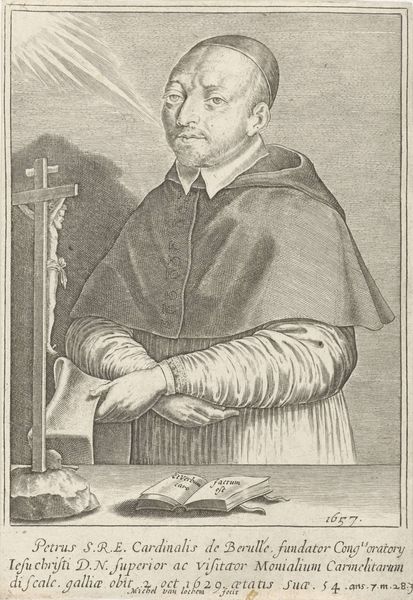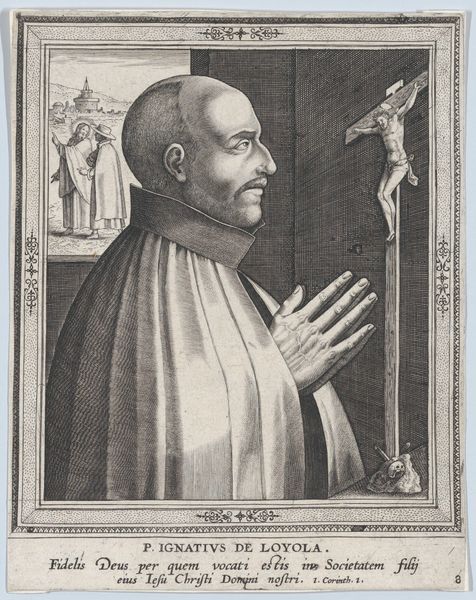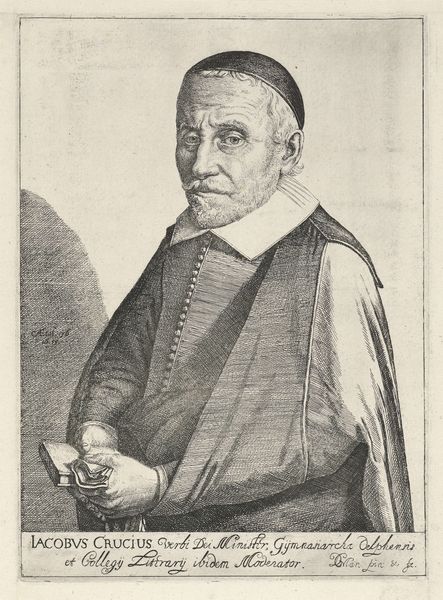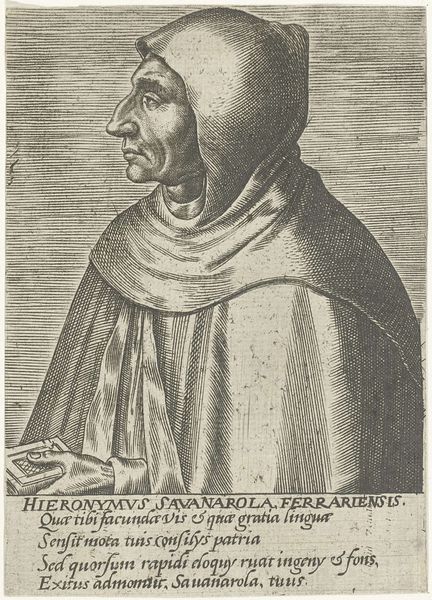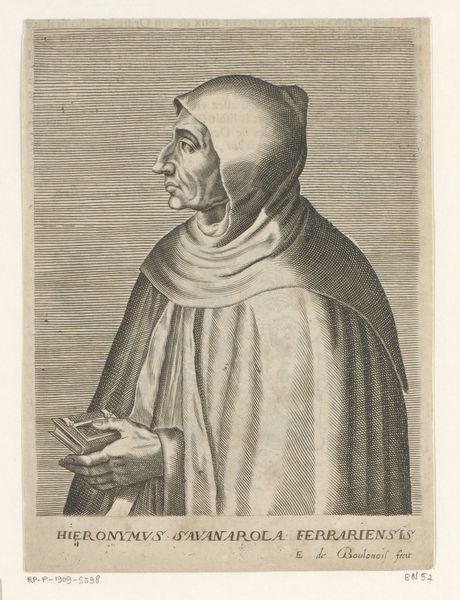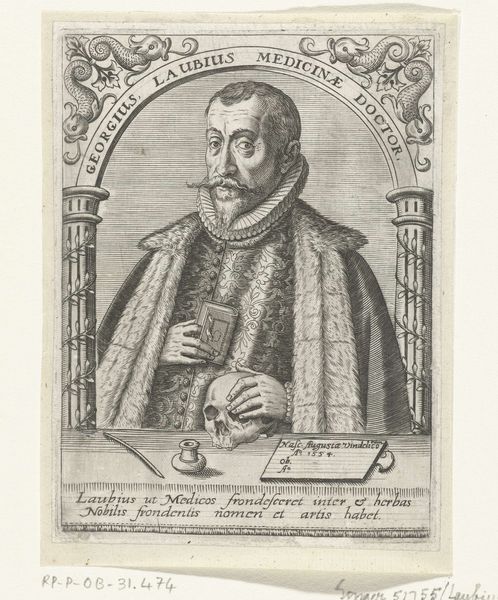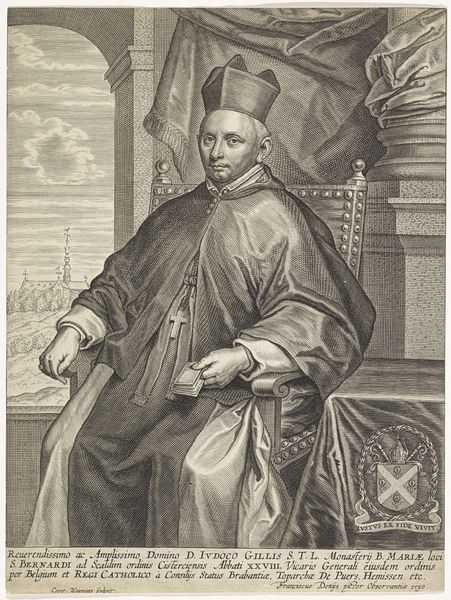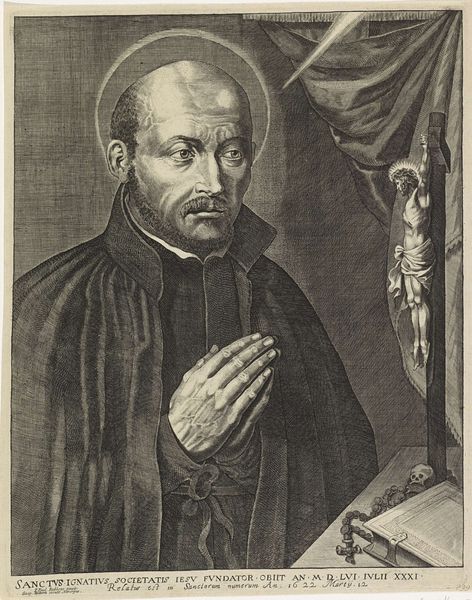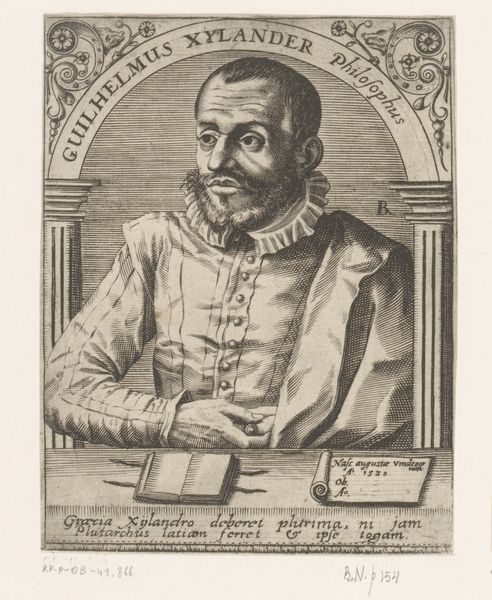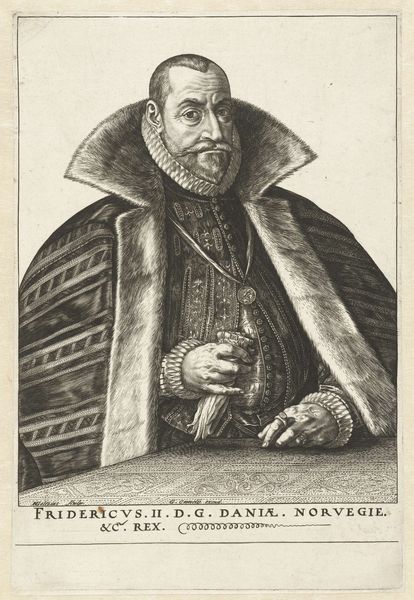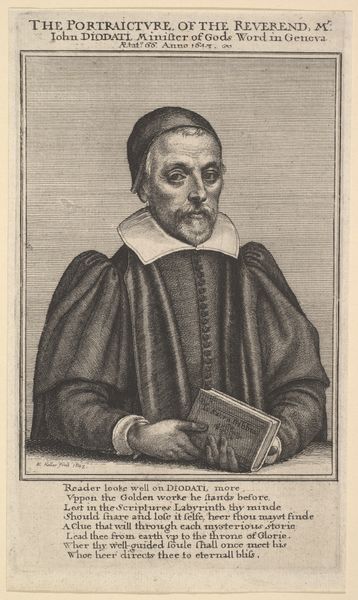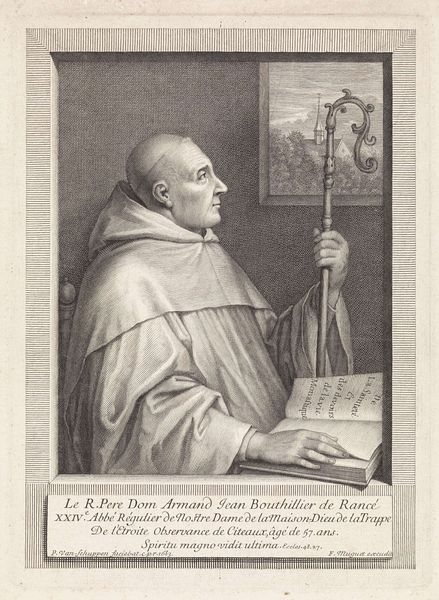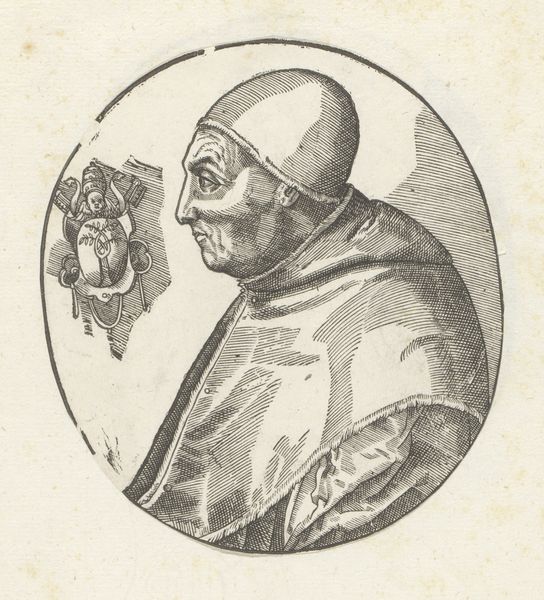
Dimensions: height 105 mm, width 67 mm
Copyright: Rijks Museum: Open Domain
Editor: So this engraving is "Portret van Ignatius van Loyola," dating roughly from 1560 to 1600, by Johann Sadeler I. It’s currently at the Rijksmuseum. I'm struck by the intensity of the gaze and how the lines create a very formal, pious mood. What do you see in this piece, especially concerning its role in society at the time? Curator: Beyond the obvious devotional aspect, this print participates in the very construction of Saint Ignatius’ image and legacy. Think about the power dynamics involved. Sadeler, an artist working within established printmaking networks, is helping to disseminate a carefully curated image of Loyola, crucial to the Jesuit order's aims and broader Counter-Reformation efforts. Who was the intended audience, and how would this portrait have functioned in various social spaces? Editor: So it wasn’t just about piety, but also about the image and influence of the Jesuits. How would this have been displayed, and by whom? Curator: Consider that. Prints like these were circulated widely, not just within the Church. They could be found in private homes, monasteries, and perhaps most importantly, used as pedagogical tools in Jesuit schools to promote the order's ideals and recruit new members. The engraving is not simply a portrait; it is carefully constructed propaganda. The crucifix, the accoutrements on the table – all these details work together. Editor: Propaganda, wow! It changes how I look at this – it makes me consider how an image, especially one so readily available, can play such an active role. Curator: Exactly. By thinking about the historical context, the institutional backing, and the social circulation of this image, we can understand the potent intersection of art, religion, and power. Editor: I never thought about prints in this way. I appreciate seeing how the visual translates into power and religious impact. Curator: It's crucial to always examine who is creating these images, and what the intent of such proliferation is, that is something I try to bear in mind.
Comments
No comments
Be the first to comment and join the conversation on the ultimate creative platform.
